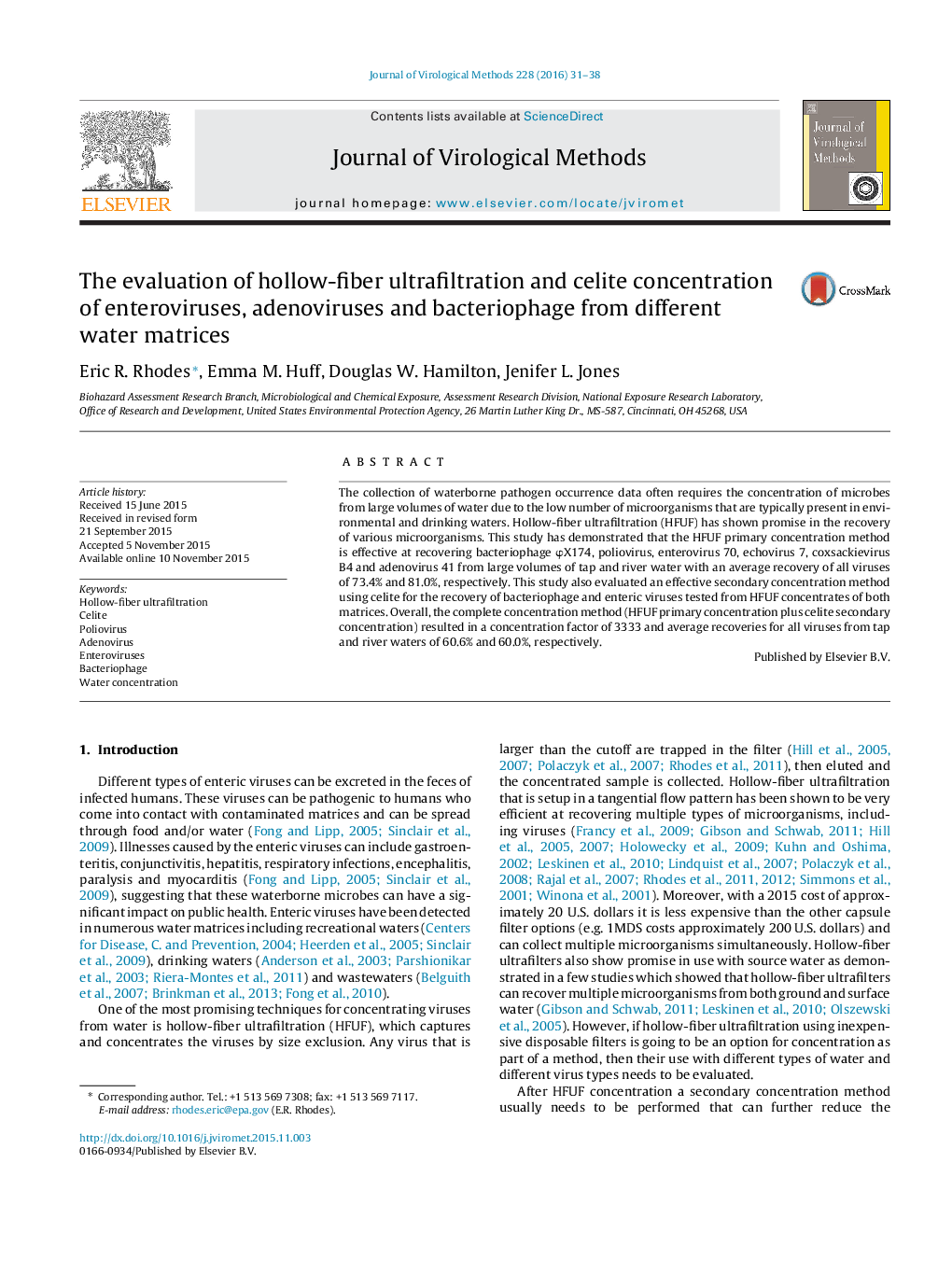| Article ID | Journal | Published Year | Pages | File Type |
|---|---|---|---|---|
| 6132991 | Journal of Virological Methods | 2016 | 8 Pages |
Abstract
The collection of waterborne pathogen occurrence data often requires the concentration of microbes from large volumes of water due to the low number of microorganisms that are typically present in environmental and drinking waters. Hollow-fiber ultrafiltration (HFUF) has shown promise in the recovery of various microorganisms. This study has demonstrated that the HFUF primary concentration method is effective at recovering bacteriophage ÏX174, poliovirus, enterovirus 70, echovirus 7, coxsackievirus B4 and adenovirus 41 from large volumes of tap and river water with an average recovery of all viruses of 73.4% and 81.0%, respectively. This study also evaluated an effective secondary concentration method using celite for the recovery of bacteriophage and enteric viruses tested from HFUF concentrates of both matrices. Overall, the complete concentration method (HFUF primary concentration plus celite secondary concentration) resulted in a concentration factor of 3333 and average recoveries for all viruses from tap and river waters of 60.6% and 60.0%, respectively.
Related Topics
Life Sciences
Immunology and Microbiology
Virology
Authors
Eric R. Rhodes, Emma M. Huff, Douglas W. Hamilton, Jenifer L. Jones,
